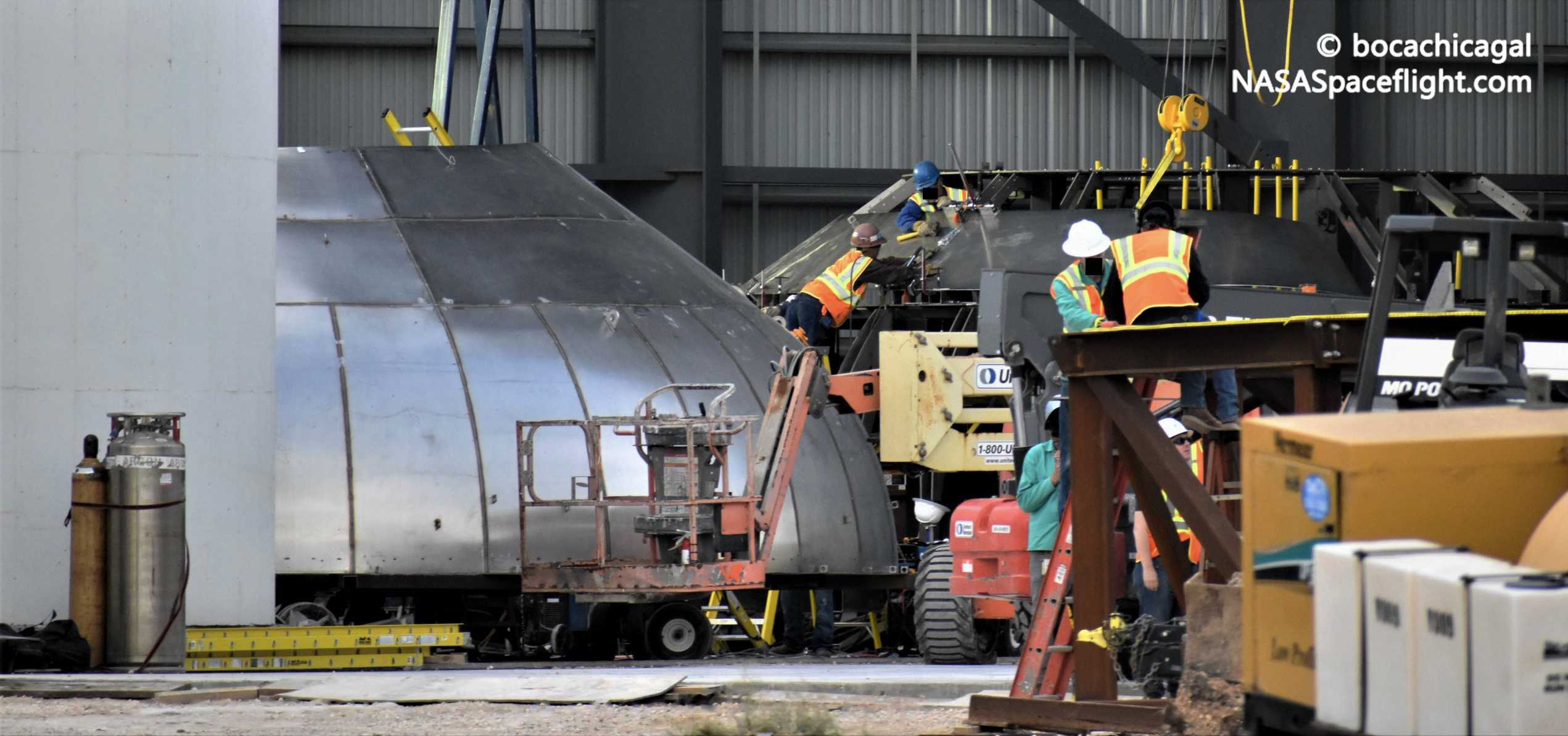
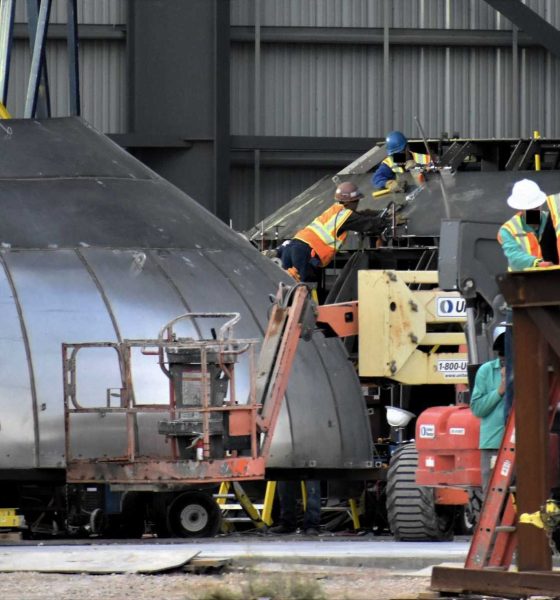
News
SpaceX's Elon Musk works through holidays on Starship's "most difficult part"
SpaceX CEO Elon Musk says he has been working through the holidays at the company’s Boca Chica facilities to get Starship’s “most difficult part” ready for the next-generation spacecraft’s next prototype and flight tests.
Known as tank domes or bulkheads, Musk says that the hardware is the most difficult part of building and assembly Starship’s primary structure, referring to the steel engine section, tanks, and pointed nose that comprise most of the spaceship’s body. Starship’s primary structure must stand up to the rigors of all aspects of flight, including highly-pressurized propellant tanks, extreme G-forces during launches, orbital reentry, and more.
It was never officially determined whether the failure was intentional or not but during the first Starship prototype’s (Mk1) last test campaign, the vehicle experience an overpressure event while being filled with liquid oxygen or nitrogen. Localized to the weld connecting the upper tank dome to Starship’s cylindrical tank section, the dome essentially sheared off at the weld and launched hundreds of feet into the air, sending a shockwave through the vehicle that crumpled many of its steel structures as if they were aluminum foil.
It’s likely that Starship Mk1’s failure was an intentional overpressure event, meaning that SpaceX may have purposely pressed the vehicle’s tanks beyond their design limits to determine how structurally sound they were. What is less clear is whether the rocket burst before or after reaching its theoretical design limit.
For reference, SpaceX’s Falcon 9 rocket operates with its fuel and oxygen tanks pressurized to about 50 psi (3.5 atm) with localized pressures likely doubling or tripling near the bottom of both tanks during the first minute or two of launch. Some amateur back-of-the-envelope calculations from videos of Starship Mk1’s burst event suggest that it was pressurized to at least 60-75 psi (4-5 atm) at its upper tank dome, meaning that the pressure on its two lower domes and tank walls would have been even higher. If correct, those unofficial figures mean that Mk1 actually performed quite well considering the ramshackle facilities and unprecedentedly spartan methods used to fabricate and assemble it.
As such, Musk likely considers Starship’s tank domes the “most difficult part of [its] primary structure” in large part because of how difficult it is to make giant propellant tank domes simultaneously light and strong. Musk has previously implied that Starship Mk1 was more 200 tons (450,000 lb) empty while the ultimate goal for the spacecraft’s empty weight is closer to 120 tons, and a large portion of that weight savings will likely have to come from making its tank domes as light as possible.
In line with that educated speculation, the last month or so of SpaceX’s Starship work in Boca Chica, Texas has been marked by a distinct focus on building tank domes. In fact, Musk himself tweeted that he had worked all night with SpaceX engineers in Boca Chica in a bid to get dome production ready for Starship’s Mk3 prototype, the first Super Heavy hardware, and many more rockets to come.
Prior to Musk’s tweet, a Starship tank dome was actually shipped all the way from Florida to Texas and arrived earlier this month. Meanwhile, technicians have been briskly building up an additional dome using what appears to be a different method of integration involving new parts. SpaceX is currently attempting to weld Starship’s tank domes together from several dozen pre-formed sheets of stainless steel.
The sheets of steel assembled into the dome Musk showed on December 27th likely arrived in Boca Chica on December 13th, implying that SpaceX has managed to complete the majority of the first dome prototype – using a new process – in barely two weeks.

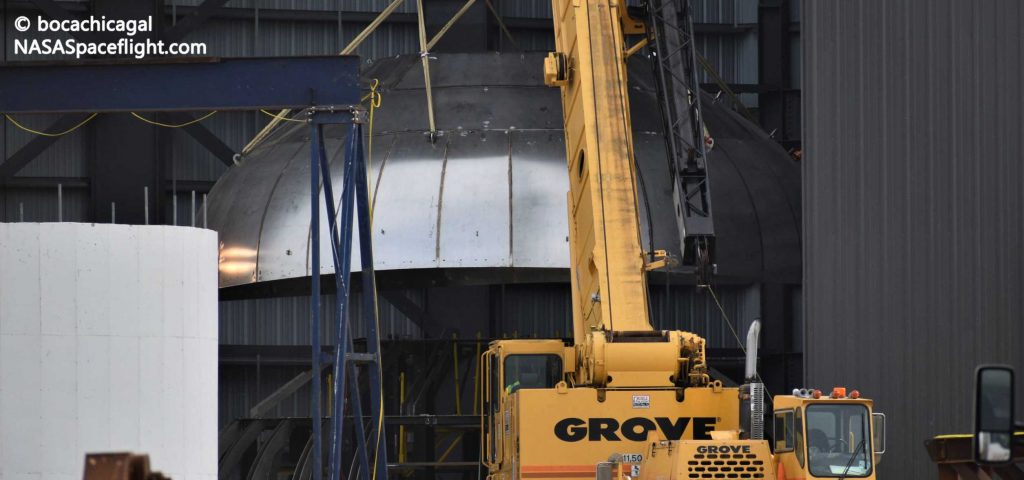
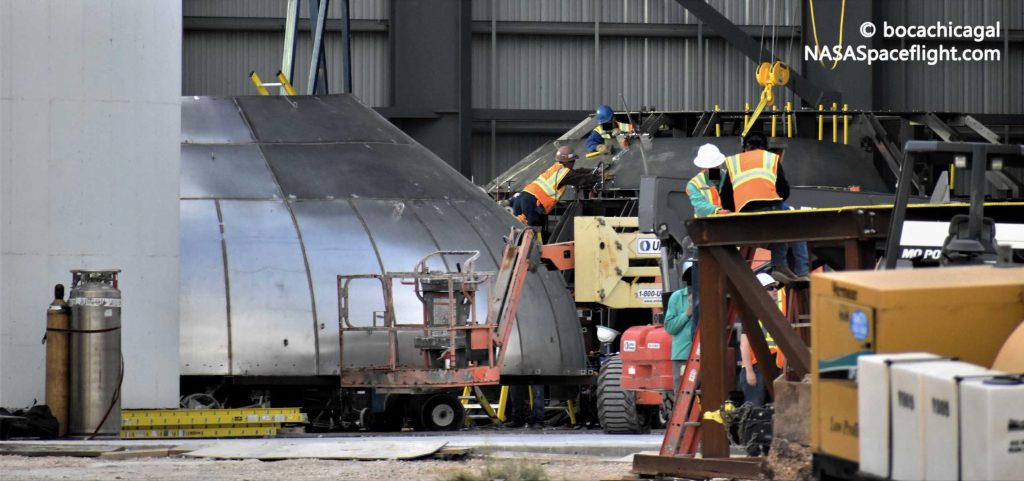
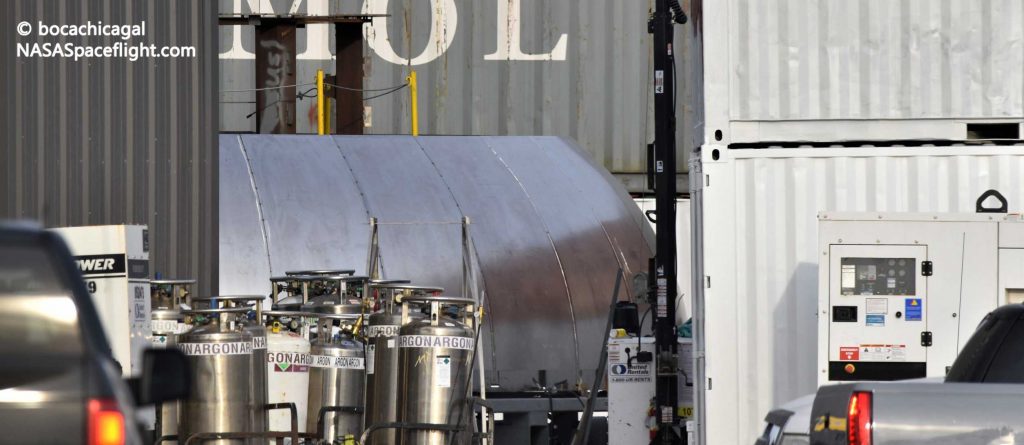
After SpaceX lifted the partially-completed dome off one of its custom assembly jigs, workers almost instantly began staging new sections of steel, beginning the process of integrating yet another tank dome – now likely the fourth on-site in Boca Chica. Meanwhile, at a nearby section of SpaceX’s Boca Chica production facilities, yet another dome was visible on the 28th. In short, SpaceX should soon have more than enough tank domes to complete the next Starship prototype – said to be a significantly improved and refined design compared to Mk1.
Known as Starship Mk3 (or Starship SN01), Musk says that the rocket – currently just a miscellaneous collection of separate parts – could (“hopefully”) be ready for its first flight as soon as February or March 2020.
Check out Teslarati’s Marketplace! We offer Tesla accessories, including for the Tesla Cybertruck and Tesla Model 3.

Elon Musk
SpaceX maintains unbelievable Starship target despite Booster 18 incident
It appears that it will take more than an anomaly to stop SpaceX’s march towards Starship V3’s refinement.
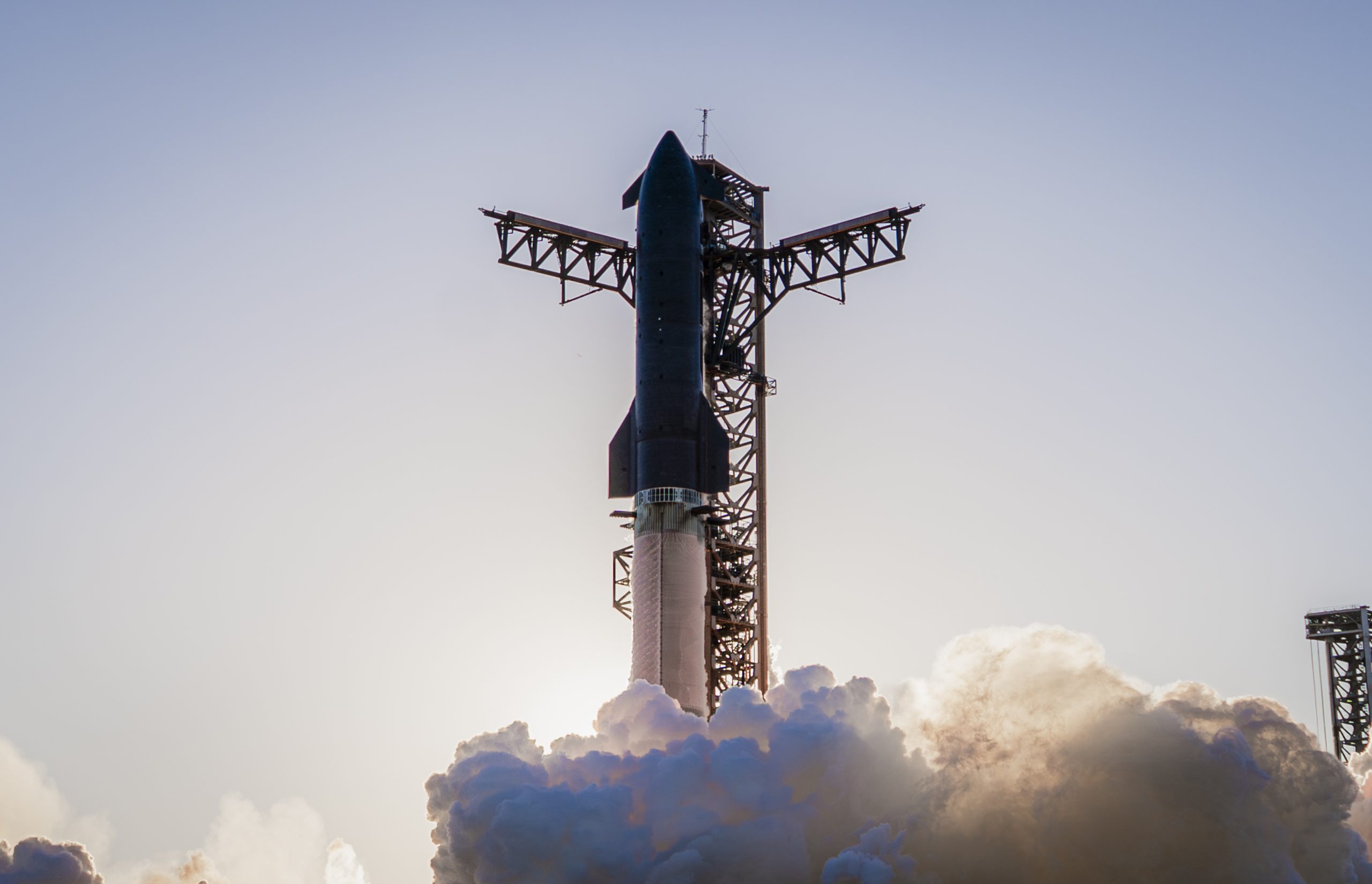
SpaceX recently shared an incredibly ambitious and bold update about Starship V3’s 12th test flight.
Despite the anomaly that damaged Booster 18, SpaceX maintained that it was still following its plans for the upgraded spacecraft and booster for the coming months. Needless to say, it appears that it will take more than an anomaly to stop SpaceX’s march towards Starship V3’s refinement.
Starship V3 is still on a rapid development path
SpaceX’s update was posted through the private space company’s official account on social media platform X. As per the company, “the Starbase team plans to have the next Super Heavy booster stacked in December, which puts it on pace with the test schedule planned for the first Starship V3 vehicle and associated ground systems.”
SpaceX then announced that Starship V3’s maiden flight is still expected to happen early next year. “Starship’s twelfth flight test remains targeted for the first quarter of 2026,” the company wrote in its post on X.
Elon Musk mentioned a similar timeline on X earlier this year. In the lead up to Starshp Flight 11, which proved flawless, Musk stated that “Starship V3 is a massive upgrade from the current V2 and should be through production and testing by end of year, with heavy flight activity next year.” Musk has also mentioned that Starship V3 should be good enough to use for initial Mars missions.
Booster 18 failure not slowing Starship V3’s schedule
SpaceX’s bold update came after Booster 18 experienced a major anomaly during gas system pressure testing at SpaceX’s Massey facility in Starbase, Texas. SpaceX confirmed in a post on X that no propellant was loaded, no engines were installed, and personnel were positioned at a safe distance when the booster’s lower section crumpled, resulting in no injuries.
Still, livestream footage showed significant damage around the liquid oxygen tank area of Booster 18, leading observers to speculate that the booster was a total loss. Booster 18 was among the earliest vehicles in the Starship V3 series, making the failure notable. Despite the setback, Starship V3’s development plans appear unchanged, with SpaceX pushing ahead of its Q1 2026 test flight target.
News
Tesla Sweden faces fresh union blockade at key Gothenburg paint shop
Allround Lack works with painting and damage repair of passenger cars, including Teslas.
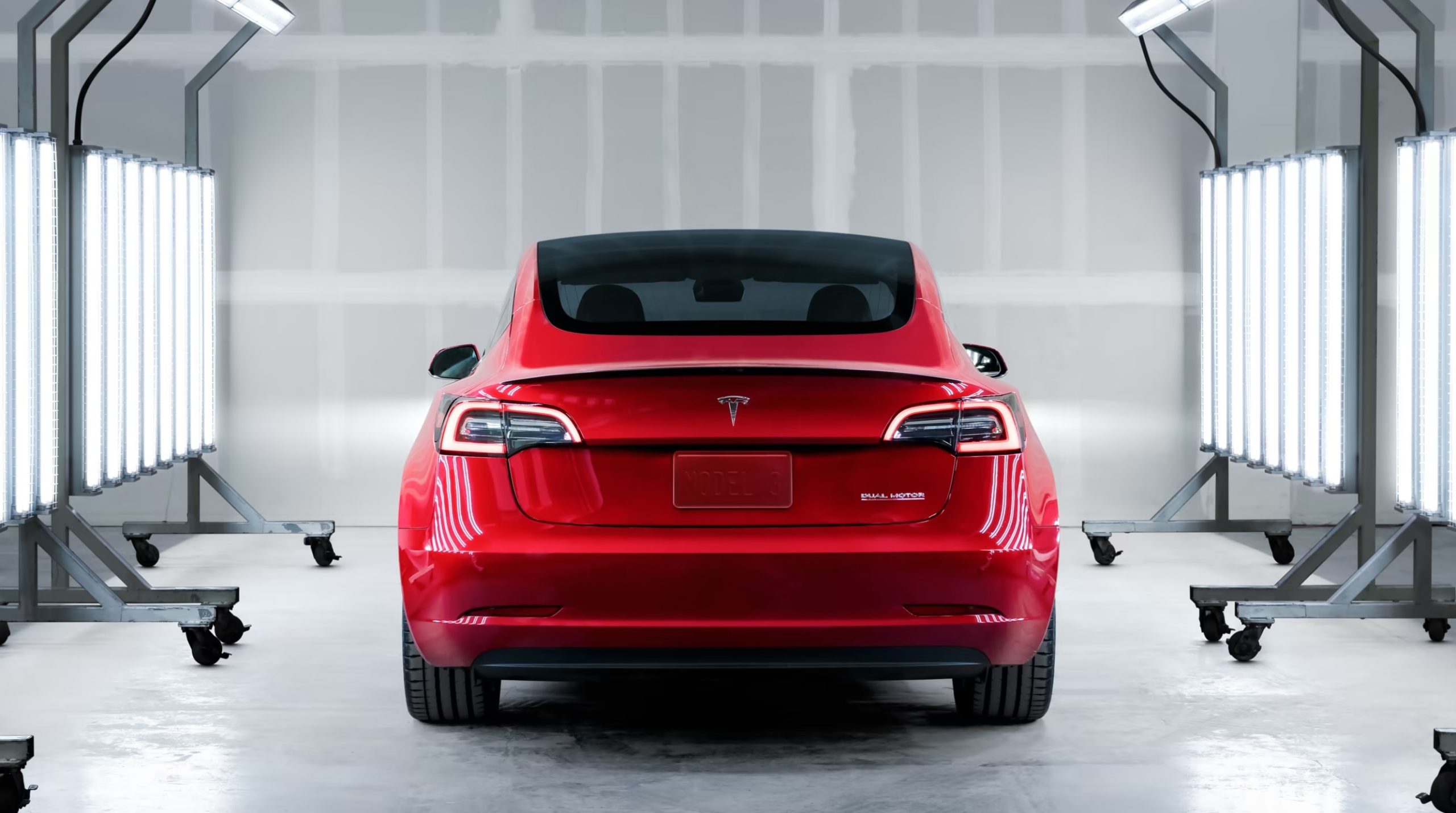
Tesla’s ongoing labor conflict in Sweden escalated again as the trade union IF Metall issued a new blockade halting all Tesla paintwork at Allround Lack in Gothenburg.
Allround Lack works with painting and damage repair of passenger cars, including Teslas. It currently employs about 20 employees.
Yet another blockade against Tesla Sweden
IF Metall’s latest notice ordered a full work stoppage for all Tesla-related activity at Allround Lack. With the blockade in place, paint jobs on Tesla-owned vehicles, factory-warranty repairs, and transport-damage fixes, will be effectively frozen, as noted in a report from Dagens Arbete. While Allround Lack is a small paint shop, its work with Tesla means that the blockade would add challenges to the company’s operations in Sweden, at least to some degree.
Paint shop blockades have been a recurring tool in the longstanding conflict. The first appeared in late 2023, when repair shops were barred from servicing Tesla vehicles. Days later, the Painters’ Union implemented a nationwide halt on Tesla paint work across more than 100 shops. Since then, a steady stream of workshops has been pulled into the conflict.
Earlier blockades faced backlash from consumers
The sweeping effects of the early blockades drew criticism from industry groups and consumers. Employers and industry organization Transportföretagen stated that the strikes harmed numerous workshops across Sweden, with about 10 of its members losing about 50% of their revenue.
Private owners also expressed their objections. Tibor Blomhäll, chairman of Tesla Club Sweden, told DA in a previous statement that the blockades from IF Metall gave the impression that the union was specifically attacking consumers. “If I get parking damage to my car, I pay for the paint myself. The company Tesla is not involved in that deal at all. So many people felt singled out, almost stigmatized. What have I done as a private individual to get a union against me?” Blomhäll stated.
In response to these complaints, IF Metall introduced exemptions, allowing severely damaged vehicles to be repaired. The union later reopened access for private owners at workshops with collective agreements. The blockades at the workshops were also reformulated to only apply to work that is “ordered by Tesla on Tesla’s own cars, as well as work covered by factory warranties and transport damage on Tesla cars.”
News
Tesla breaks Norway’s all-time annual sales record with one month to spare
With November alone delivering 4,260 new registrations, Tesla has cemented its most dominant year ever in one of Europe’s most mature EV markets.
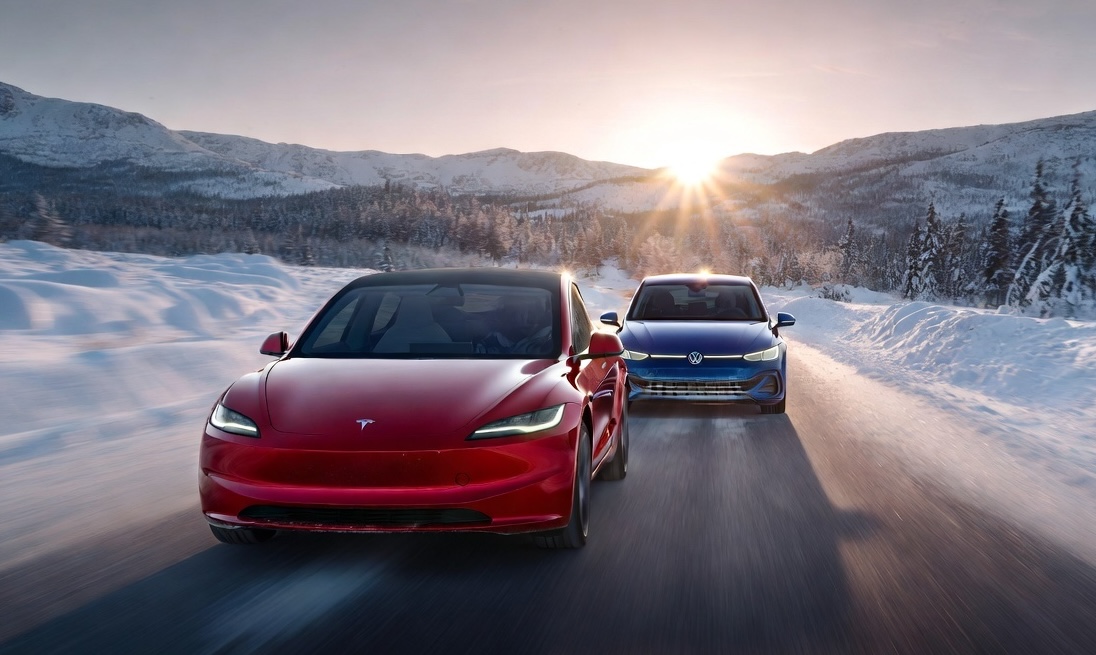
Tesla shattered Norway’s decade-old annual sales record this month, overtaking Volkswagen’s long-standing milestone with over one month still left in the year. Backed by surging demand ahead of Norway’s upcoming VAT changes, Tesla has already registered 26,666 vehicles year-to-date, surpassing Volkswagen’s 2016 record of 26,572 units.
With November alone delivering 4,260 new registrations month-to-date, Tesla has cemented its most dominant year ever in one of Europe’s most mature EV markets.
Model Y drives historic surge in Norway
Tesla’s impressive momentum has been led overwhelmingly by the Model Y, which accounted for 21,517 of Norway’s registrations this year, as noted in a CarUp report, citing data from Elbil Statistik. The Model 3 followed with 5,087 units, while the Model S and Model X contributed 30 and 19 vehicles, respectively. Even the parallel-imported Cybertruck made the charts with 13 registrations.
Demand intensified sharply through autumn as Norwegian buyers rushed to secure deliveries before the country’s VAT changes take effect in January. The new regulation is expected to add roughly NOK 50,000 to the price of a Model Y, prompting a wave of early purchases that helped lift Tesla beyond the previous all-time record well before year-end.
With December still ahead, Tesla is positioned to extend its historic lead further. Needless to say, it appears that Norway will prove to be one of Tesla’s strongest markets in Europe.
FSD could be a notable demand driver in 2026
What’s especially interesting about Tesla’s feat in Norway is that the company’s biggest selling point today, Full Self-Driving (Supervised), is not yet available there. Tesla, however, recently noted in a post on X that the Dutch regulator RDW has reportedly committed to issuing a Netherlands national approval for FSD (Supervised) in February 2026.
The RDW posted a response to Tesla’s post, clarifying the February 2026 target but stating that FSD’s approval is not assured yet. “The RDW has drawn up a schedule with Tesla in which Tesla is expected to be able to demonstrate that FSD Supervised meets the requirements in February 2026. RDW and Tesla know what efforts need to be made to make a decision on this in February. Whether the schedule will be met remains to be seen in the coming period,” the RDW wrote in a post on its official wesbite.
If FSD (Supervised) does get approved next year, Tesla’s vehicles could gain a notable advantage over competitors, as they would be the only vehicles on the market capable of driving themselves on both inner-city streets and highways with practically no driver input.








